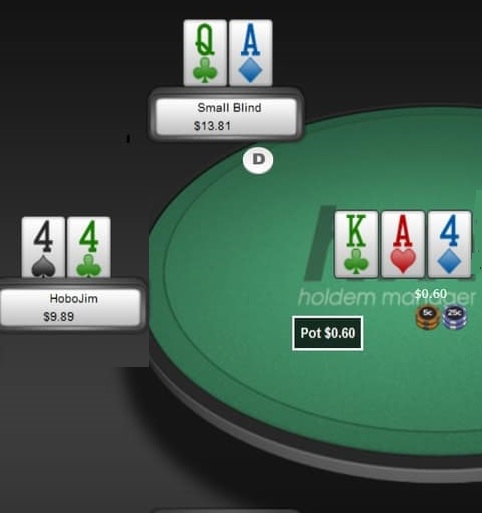Strategies for Set Mining in NL Hold’em

Set mining is when you’re playing a pocket pair, generally a small one, with the hopes of flopping a set. When you hit your set, you’re generally going to win a big pot. Those of you that are new to poker may be a bit confused on the best way to set mine.
Today, we will give you three different strategies for attempting a set mine in poker. Which you pick will depend on your opponent, stack size, and your general comfort level in making these moves.
Limping
One of the more common strategies for set mining, particularly among beginners, is to limp into a hand. For example, you have a pair of fours in early position. In this case, you may want to limp in and see how the rest of the players act at the table.
The downside to this strategy is that you are subject to raises and reraises from your other opponents. When you face a raise or three-bet, how you proceed will depend a lot on your stack and the opponent raising. If it is a loose player who may be raising with garbage, then you may want to call. If it is a nittier player making the raise, you know your pocket fours could be crushed.
Next, how much is the raise. Annette Obrestad has said she will usually wager no more than ten percent of her stack to set mine. That’s a good place to start but there may be times where you want to risk more, even less.
Raising
Your second option for set mining is to simply come in firing, regardless of position. In this scenario, you are looking to take control of the hand and the betting of the hand. That’s the primary advantage to raising when set mining. On the flop, you are generally going to control the betting. You may even be able to push players out on a continuation bet.

A pair of four is a solid heads-up hand and a great opportunity to set mine.
The downside to this strategy is that you’re going to be potentially investing more money into the hand when someone three-bets you. If you look down to fives and raise and the button three-bets, you may be investing a lot more than you’re comfortable with on those fives. If you miss the set on the flop, what then?
This is going to be the higher variance play of the three options presented. When you’re deep stacked, the variance will not be as crushing as when you are an average stack or a shorter stack.
Raising in Position
Set mining in position is about as good as it gets in most hands. When you’re the first to act, you are going to be taking control of the betting and will generally risk less money. Unless someone wakes up with a hand in the blinds, you’re going to see the flop and get a chance to catch your set. Better still, you may get to take a card off on the flop when someone checks. You can also try and take down the pot with a continuation bet.
You’re Not Going to Set Mine Every Pair
Some poker players fall into a trap and try to set mine with every pocket pair they receive. While some might think this is a solid play, you need to mix up your play. Also, set mining is a variance play. You will only flop a set about 12% of the time. That’s why investing no more than 10% of your stack is a +EV move.
Finding the right balance between set mining and folding smaller pairs takes practice. In time, you will be set mining with the best of them and taking down big pots when your set hits.
